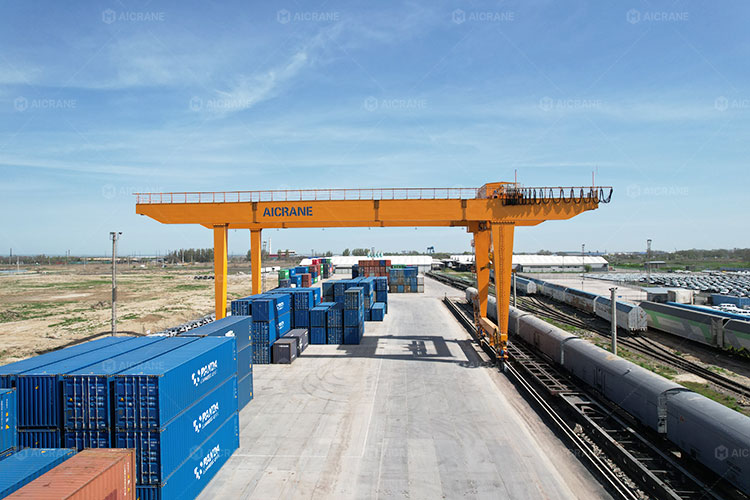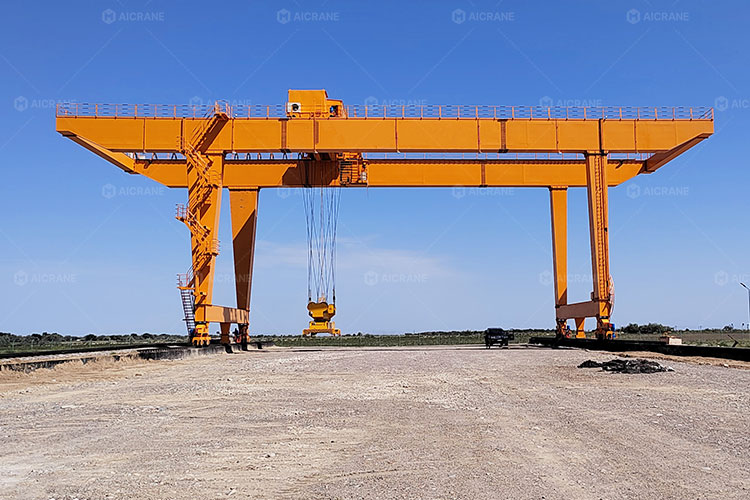Rail Mounted Gantry (RMG) cranes play a central role in container terminals, intermodal yards, and large-scale precast or steel fabrication plants. Their precision, high load capacity, and rail-mounted stability make them ideal for intensive lifting and transport operations. However, in busy worksites where space, time, and coordination are critical, efficient planning of daily RMG crane operations becomes essential. Poor planning can lead to traffic congestion, idle time, and safety risks, while well-structured scheduling can maximize productivity and reduce costs.
This article outlines how to effectively plan and manage daily RMG crane operations in demanding worksites, including workflow organization, equipment scheduling, operator management, and the use of digital tools.

Understanding RMG Crane Operational Dynamics
Before developing a daily operation plan, it’s important to understand how rail mounted cranes interact with the worksite environment. RMG cranes operate on fixed rails, meaning their movement is restricted to a linear track. Therefore, every lift, transport, and positioning activity must be precisely coordinated with other yard operations such as truck entry, container loading, stacking, or material staging.
In busy facilities like container terminals or precast yards, multiple RMG cranes often share adjacent working zones. Overlaps between crane spans or track intersections can lead to operational bottlenecks. The daily plan must therefore include safe operating zones, scheduled time slots, and predefined coordination protocols between crane teams to avoid conflicts.
Step 1: Establish Clear Daily Objectives
Effective planning begins with defining the operational targets for the day. These objectives should align with overall production or logistics goals. Examples include:
-
Number of containers to move or stack within the shift
-
Sequence of loading/unloading tasks
-
Prioritized orders for dispatch or storage
-
Material flow targets between production and storage zones
By setting clear goals, supervisors can distribute workloads among gantry cranes and operators more evenly, preventing overutilization of one crane while others remain idle.
Step 2: Review Equipment Availability and Readiness
Before daily operations begin, all RMG cranes should undergo pre-operation checks. This includes inspection of hoisting mechanisms, trolley systems, rail tracks, control systems, and safety devices such as limit switches, load indicators, and anti-collision sensors.
A structured maintenance and readiness checklist should be part of the daily plan to prevent unexpected downtime. The crane operator or technician should confirm:
-
Lubrication and mechanical conditions are satisfactory
-
No abnormal noise or vibration in motors and drives
-
Safety systems are tested and functional
-
Wireless or cabin communication systems are operational
Including this step ensures that cranes are fully prepared before being dispatched to tasks, minimizing interruptions during peak operations.

Step 3: Develop an Optimized Work Schedule
In high-traffic worksites, time efficiency is crucial. A daily RMG operation schedule should be created based on task priorities and available resources. When planning the schedule:
-
Use time slots for each operational section to reduce overlap between cranes.
-
Coordinate container movement with truck arrival and departure times.
-
Assign cranes based on proximity to specific rail tracks or work areas to reduce unnecessary travel.
-
Plan peak-hour operations to balance throughput between morning, midday, and night shifts.
Software-based scheduling tools are increasingly used to generate automatic container gantry crane work sequences based on container position data or yard management systems. These tools can significantly reduce human error and improve precision.
Step 4: Define Traffic and Coordination Rules
Busy container yards or manufacturing plants often have multiple RMG cranes operating side by side. To maintain order, it’s essential to define coordination rules such as:
-
Operating boundaries: Each crane must stay within its assigned working range.
-
Movement coordination: For adjacent cranes, an interlock system or anti-collision device prevents simultaneous approach to shared boundaries.
-
Priority paths: Establish predefined routes for trucks or transfer vehicles to avoid congestion.
-
Communication protocols: Operators should report through radio or digital dispatch platforms before moving large gantry cranes across operational zones.
These coordination rules should be displayed clearly in operation areas and reinforced through daily briefing sessions.
Step 5: Assign Skilled Operators and Support Staff
RMG cranes require skilled operators who can handle large loads with precision. The daily plan should match operator experience with task complexity. For example, an operator with advanced control skills should handle high-density stacking or tandem operations.
In addition to operators, the plan should include:
-
Signalers or coordinators for ground guidance and communication
-
Maintenance staff on standby for quick intervention
-
Supervisors or dispatchers to monitor performance and respond to scheduling adjustments
A balanced staffing structure ensures that all aspects of operation – lifting, logistics, and maintenance – are covered.
Step 6: Integrate Safety Protocols into the Daily Routine
Safety must be built into every stage of RMG crane operation planning. A daily safety briefing should remind operators and ground staff of key procedures:
-
Verify no personnel or vehicles are within the crane’s travel zone
-
Maintain proper load alignment and sling integrity
-
Avoid exceeding rated lifting capacity
-
Use designated walkways and barriers near rails
-
Follow lockout/tagout procedures during maintenance or emergency stops
Digital safety monitoring systems can further enhance awareness by sending real-time alerts for overload, misalignment, or proximity hazards.
Step 7: Monitor and Adjust in Real Time
Even with detailed planning, conditions in busy worksites can change rapidly due to weather, equipment breakdowns, or shipment delays. Therefore, live monitoring and flexibility are crucial.
Using an RMG control system integrated with yard management software, supervisors can track:
-
Real-time crane position and operational status
-
Task completion progress
-
Load weight and movement data
-
Operator performance indicators
If congestion or delays occur, tasks can be reassigned instantly to other cranes, minimizing overall disruption. Data collected during the day can also support post-shift analysis to improve future scheduling.
Step 8: Conduct End-of-Shift Review
At the end of each shift, a brief operational review helps evaluate performance against daily targets. Operators should report any mechanical issues, safety incidents, or workflow inefficiencies.
This review can cover:
-
Number of moves completed versus planned
-
Downtime causes and response efficiency
-
Energy consumption trends
-
Feedback from operators and ground personnel
Documenting these findings supports continuous improvement and predictive maintenance planning.
Using Technology to Support Operation Planning
Modern RMG cranes are equipped with digital control systems and IoT-enabled sensors that provide valuable operational data. Integrating these technologies into daily planning can improve accuracy and efficiency. Examples include:
-
Automated scheduling systems that assign crane tasks based on real-time yard data
-
GPS-based positioning to ensure optimal stacking and movement paths
-
Anti-collision and zone management systems to improve safety
-
Remote monitoring platforms that provide instant feedback on operation progress
Automation and data analytics are transforming traditional RMG operations into highly coordinated, intelligent systems capable of handling high workloads with minimal downtime.
Conclusion
Planning daily RMG crane operations in busy worksites is not merely about assigning tasks; it’s about orchestrating complex movements, optimizing time, ensuring safety, and maintaining equipment reliability. Through clear objectives, structured schedules, skilled staffing, and the integration of smart technologies, operators can maximize productivity while minimizing risks.
With proper planning, RMG cranes become not just lifting machines, but critical tools for operational excellence – ensuring that every container, component, or load moves smoothly and safely within even the most demanding work environments.